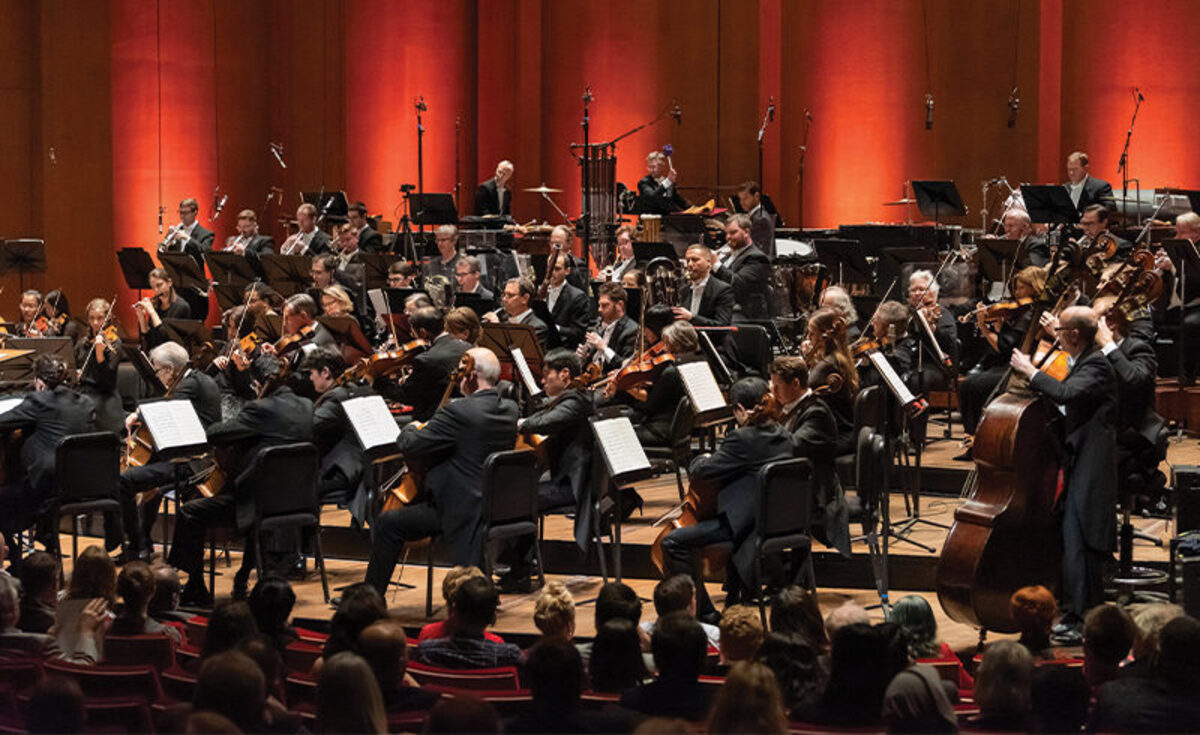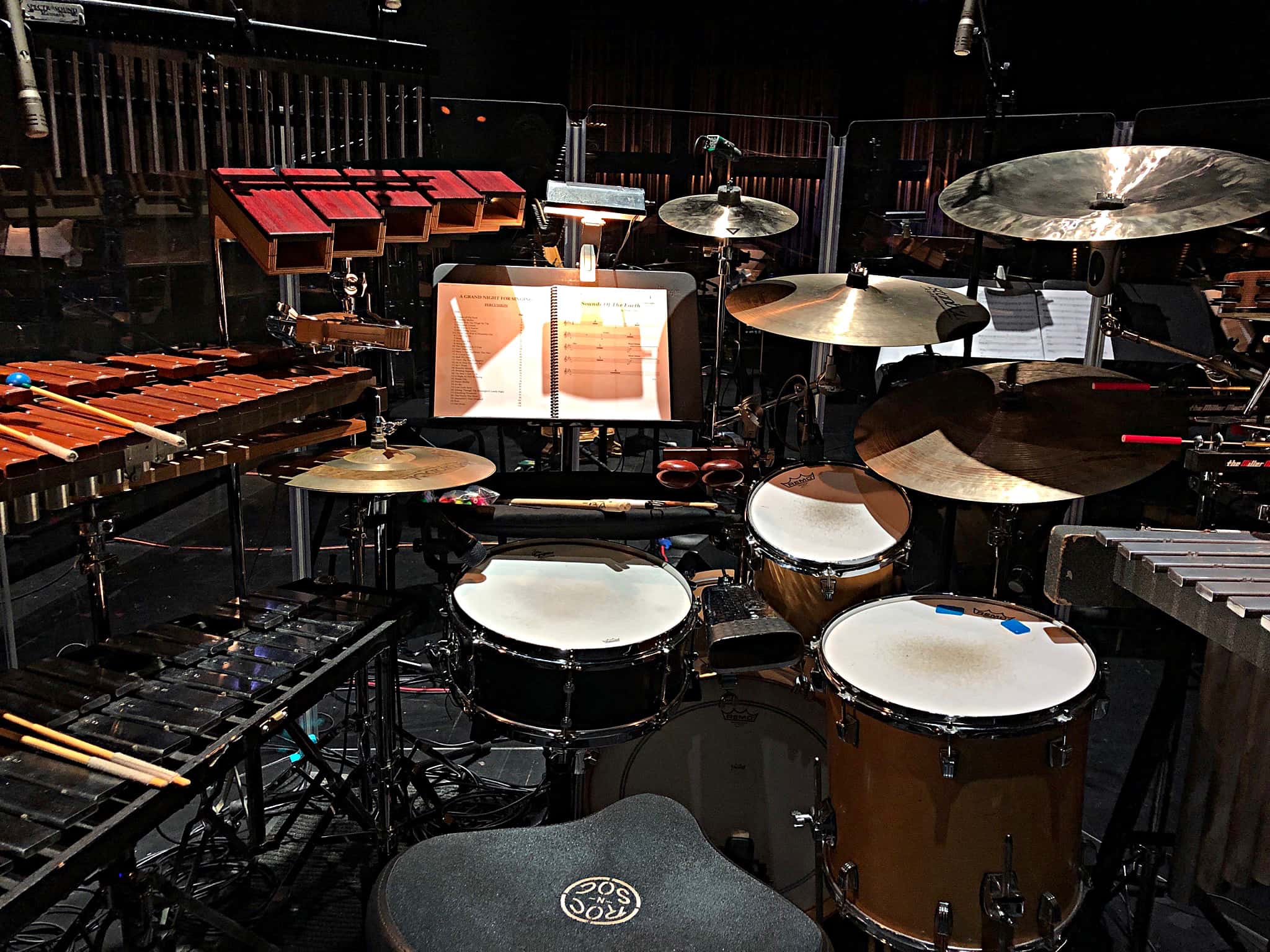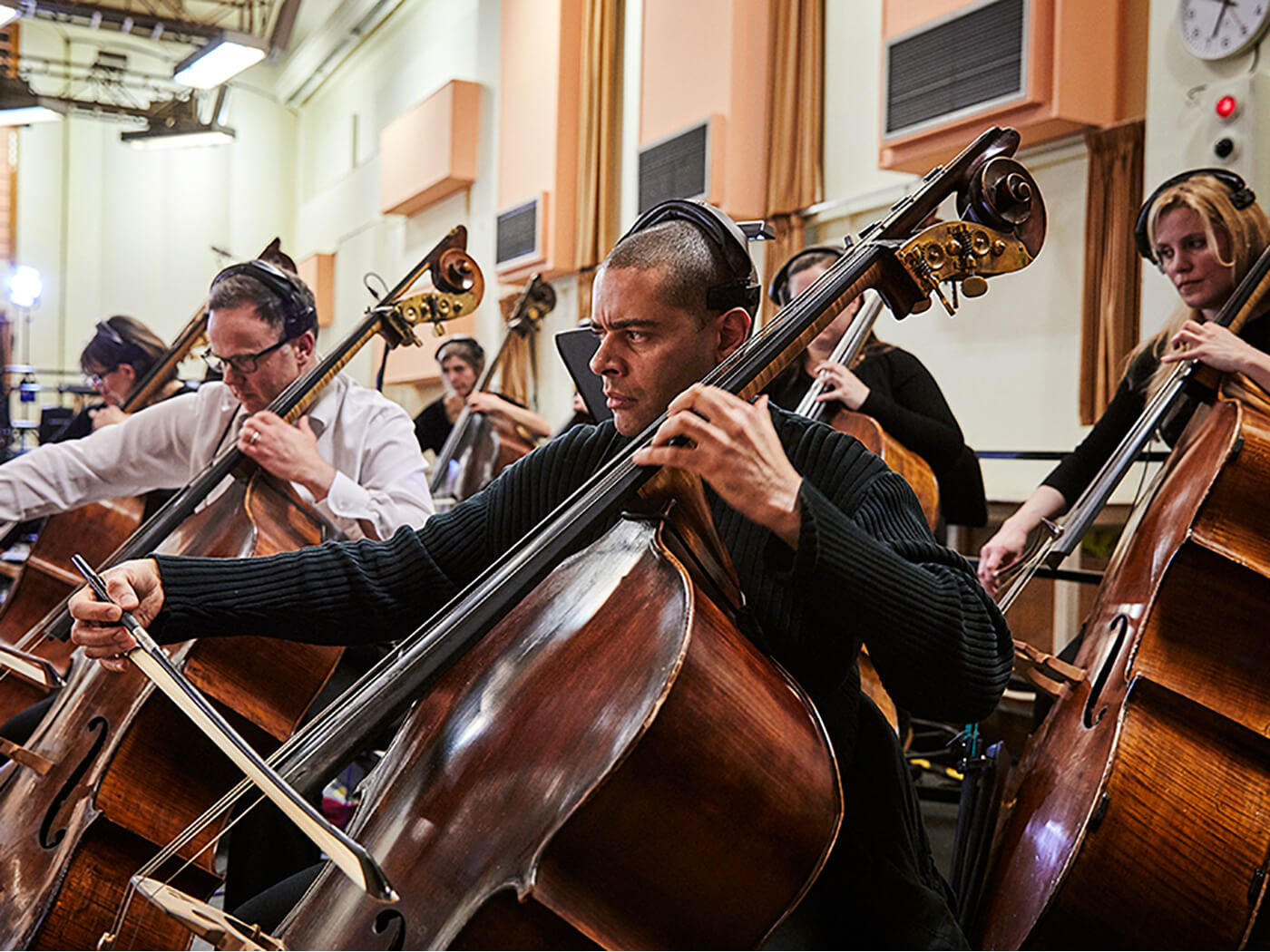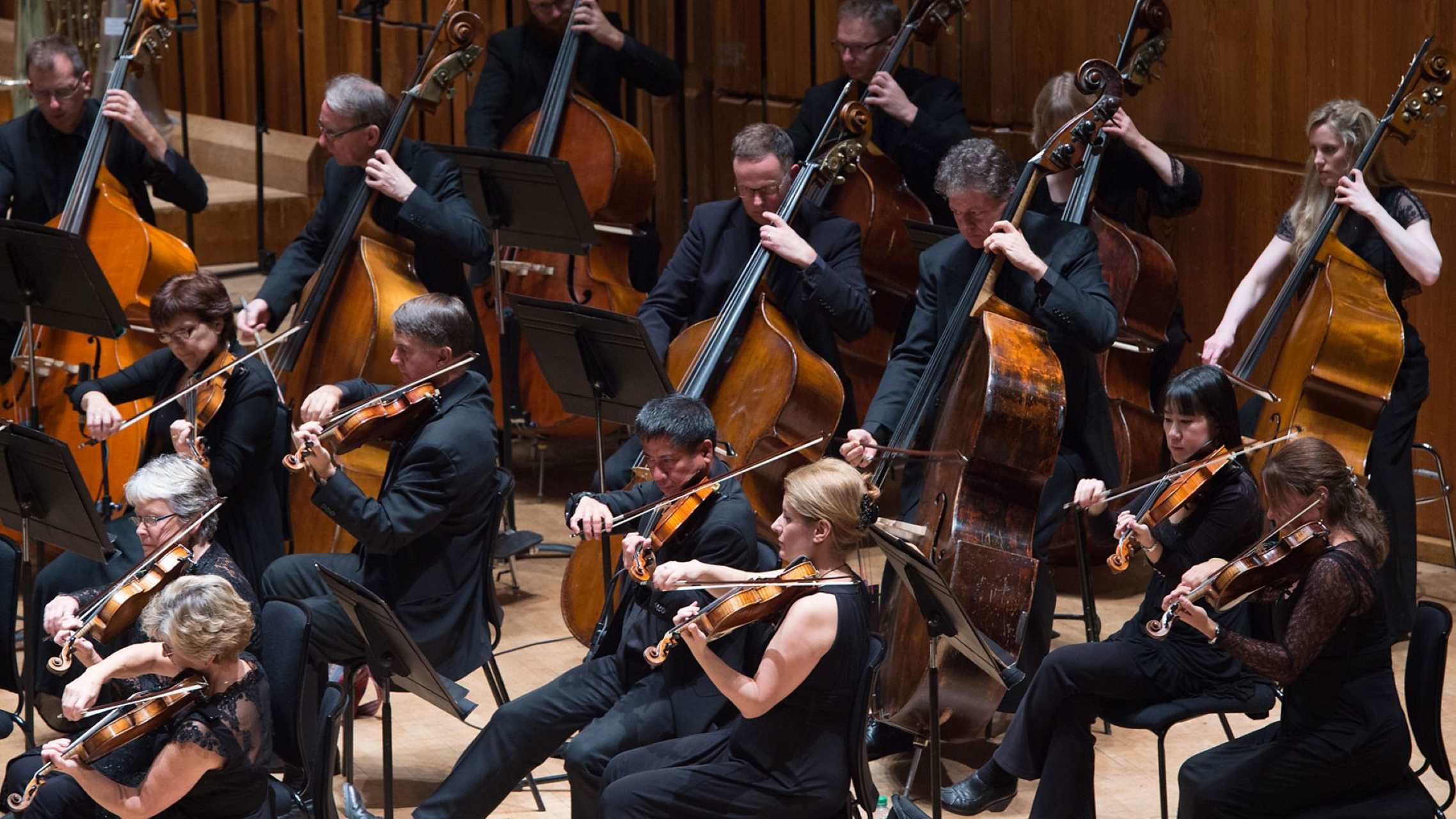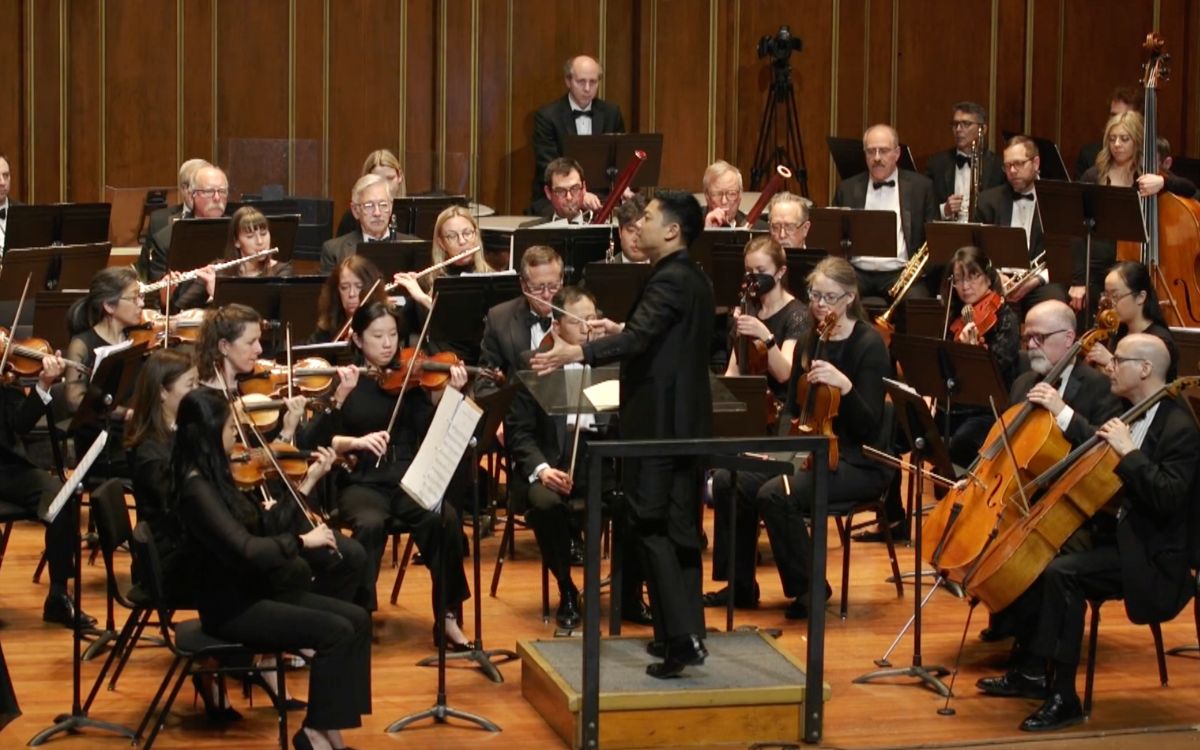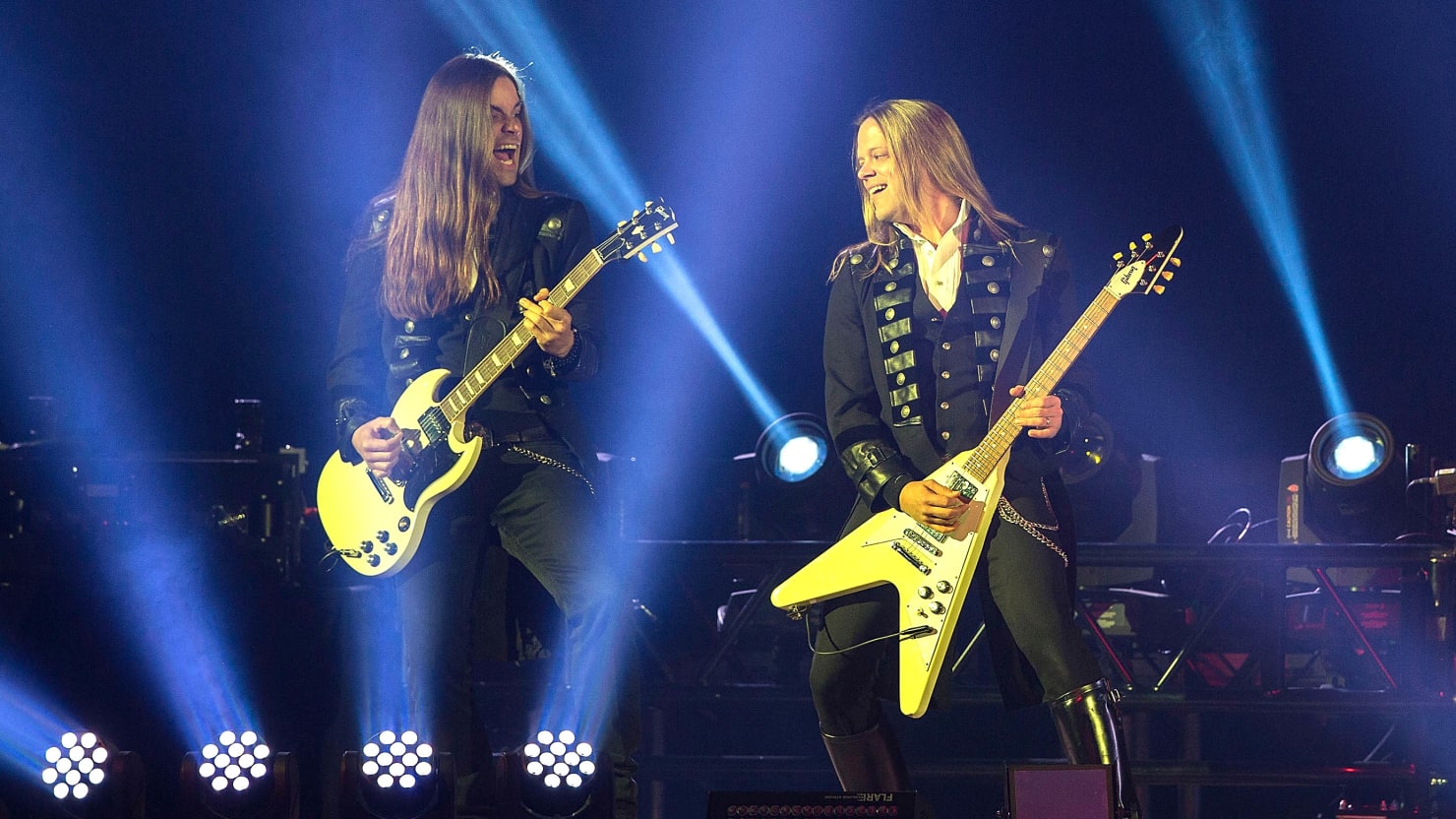Home>Production & Technology>Orchestra>How Many Are In A Full Orchestra


Orchestra
How Many Are In A Full Orchestra
Published: February 24, 2024
Discover the impressive ensemble of a full orchestra and the diverse range of instruments that create its harmonious symphony. Learn about the composition and organization of an orchestra.
(Many of the links in this article redirect to a specific reviewed product. Your purchase of these products through affiliate links helps to generate commission for AudioLover.com, at no extra cost. Learn more)
Table of Contents
Introduction
When you think of an orchestra, what comes to mind? Perhaps a grand stage adorned with a myriad of instruments and musicians, each passionately contributing to the symphonic masterpiece. The concept of an orchestra conjures images of harmony, precision, and the collective talent of numerous musicians working in unison. However, have you ever wondered just how many individuals come together to form a full orchestra?
In this article, we will delve into the captivating world of orchestras, exploring the various sections and instruments that comprise these ensembles. From the majestic strings to the resounding brass and the vibrant woodwinds, each component plays a crucial role in creating the enchanting tapestry of sound that defines a full orchestra. By unraveling the intricacies of orchestral composition, we will uncover the sheer magnitude of talent and coordination required to bring these musical marvels to life.
Join us on a journey through the heart of the orchestra, where the magic of music converges with the dedication and artistry of the musicians. Let's embark on an exploration of the different sections and instruments that collectively form the symphonic powerhouse known as a full orchestra.
The Different Sections of a Full Orchestra
A full orchestra is a magnificent amalgamation of various musical sections, each contributing its unique timbre and character to the ensemble's overall sound. These sections are meticulously arranged to achieve a harmonious balance, creating a rich and dynamic sonic tapestry that captivates audiences worldwide. Let's delve into the distinct sections that constitute a full orchestra:
1. Strings Section
The strings section forms the very foundation of the orchestra, comprising violins, violas, cellos, and double basses. Renowned for their versatility, these instruments are capable of producing a wide range of tones, from delicate and ethereal to robust and resonant. The strings section often serves as the backbone of the orchestra, providing lush harmonies, intricate melodies, and rhythmic support.
2. Woodwinds Section
The woodwinds section introduces a diverse array of instruments, including flutes, oboes, clarinets, and bassoons. Each instrument in this section possesses its distinct tonal quality, enabling the creation of evocative melodies and vibrant textures. From the airy, lilting melodies of the flute to the warm, expressive timbre of the clarinet, the woodwinds section enriches the orchestra with its melodic prowess and expressive capabilities.
3. Brass Section
The brass section infuses the orchestra with its commanding presence, featuring trumpets, trombones, French horns, and tubas. Renowned for their resounding power and majestic grandeur, these instruments add a regal and triumphant quality to the orchestra's sound. Whether heralding majestic fanfares or resonating with solemn grandeur, the brass section commands attention and adds a majestic flourish to the orchestra's repertoire.
4. Percussion Section
The percussion section encompasses an extensive array of instruments, including timpani, snare drums, cymbals, and a myriad of auxiliary percussion instruments. With their rhythmic precision and dynamic range, percussion instruments provide the orchestra with rhythmic drive, dramatic accents, and vibrant textures. From thunderous crescendos to delicate rhythmic nuances, the percussion section imbues the orchestra with a compelling rhythmic foundation and dramatic flair.
5. Harp and Keyboard Section
The harp and keyboard section introduces the enchanting sounds of the harp, piano, and other keyboard instruments. These instruments contribute ethereal glissandos, delicate arpeggios, and harmonic richness to the orchestra's sonic palette. Whether evoking celestial serenity or adding ornate embellishments to the orchestral tapestry, the harp and keyboard section imbue the ensemble with a touch of celestial elegance and melodic intricacy.
In essence, a full orchestra is a symphonic marvel that harmoniously integrates these diverse sections, each contributing its unique sonic colors and expressive capabilities. The intricate interplay of strings, woodwinds, brass, percussion, and harp and keyboard instruments culminates in a breathtaking symphonic tableau, showcasing the collective artistry and virtuosity of the musicians.
The Instruments in Each Section
Strings Section
The strings section forms the backbone of the orchestra, comprising an array of instruments that exude elegance and versatility. The section typically includes the violin, viola, cello, and double bass. The violin, with its soaring melodies and agile articulation, takes center stage, often leading the orchestra with its expressive phrasing and virtuosic passages. The viola, known for its warm and sonorous timbre, enriches the ensemble with its rich, mellow tones, adding depth and resonance to the orchestral texture. The cello, with its soul-stirring melodies and deep, resonant voice, infuses the orchestra with poignant lyricism and emotive depth. Lastly, the double bass, with its commanding presence and robust resonance, anchors the ensemble with its powerful low tones, providing a solid foundation for the entire orchestra.
Woodwinds Section
The woodwinds section introduces a diverse array of instruments, each contributing its distinctive tonal qualities to the orchestra. This section typically includes the flute, oboe, clarinet, and bassoon. The flute, renowned for its crystalline purity and agile agility, weaves enchanting melodies and delicate trills throughout the orchestral tapestry. The oboe, with its hauntingly expressive timbre and poignant lyricism, adds emotive depth and melodic richness to the ensemble. The clarinet, with its velvety smoothness and dynamic range, imparts a wide spectrum of tonal colors, from warm, resonant lows to sparkling, agile highs. The bassoon, with its deep, reedy resonance and expressive versatility, lends a robust foundation and whimsical charm to the orchestra's sonic palette.
Brass Section
The brass section commands attention with its resounding power and regal grandeur, featuring instruments such as the trumpet, trombone, French horn, and tuba. The trumpet, renowned for its brilliant fanfares and triumphant flourishes, takes center stage with its commanding presence and soaring melodic lines. The trombone, with its bold, sonorous voice and majestic resonance, adds depth and gravitas to the orchestral sound, often heralding grandiose themes and majestic chorales. The French horn, with its velvety warmth and noble lyricism, infuses the ensemble with a sense of pastoral beauty and melodic richness. The tuba, with its commanding low register and majestic grandeur, anchors the brass section with its powerful bass foundation, adding weight and depth to the orchestral timbre.
Percussion Section
The percussion section encompasses an extensive array of instruments, each contributing rhythmic drive, dynamic accents, and vibrant textures to the orchestra. This section typically includes the timpani, snare drum, cymbals, and a myriad of auxiliary percussion instruments. The timpani, with its thunderous resonance and commanding presence, provides the orchestra with dramatic accents, powerful crescendos, and rhythmic propulsion. The snare drum, with its crisp articulation and dynamic versatility, adds rhythmic precision and expressive nuance to the orchestral texture. The cymbals, with their shimmering brilliance and explosive crashes, punctuate the orchestral passages with dramatic flair and vibrant accents. The auxiliary percussion instruments, ranging from tambourines and triangles to marimbas and xylophones, introduce a kaleidoscope of rhythmic colors and textural nuances, enriching the orchestra with a diverse array of percussive effects and dynamic subtleties.
Harp and Keyboard Section
The harp and keyboard section introduce ethereal glissandos, delicate arpeggios, and harmonic richness to the orchestra's sonic palette. This section typically includes the harp, piano, and other keyboard instruments. The harp, with its celestial resonance and cascading arpeggios, imbues the ensemble with a touch of heavenly serenity and enchanting delicacy, adding ethereal textures and melodic embellishments to the orchestral tapestry. The piano, with its expressive range and harmonic depth, enriches the orchestra with lush harmonies, evocative melodies, and virtuosic flourishes, adding a symphonic grandeur and melodic intricacy to the ensemble. Other keyboard instruments, such as the celesta and organ, contribute their unique timbres and expressive capabilities, enhancing the orchestra with a diverse array of harmonic colors and textural nuances.
In essence, the instruments in each section of a full orchestra collectively form a symphonic marvel, intertwining their diverse timbres, expressive capabilities, and technical prowess to create a breathtaking symphonic tableau that showcases the collective artistry and virtuosity of the musicians.
The Total Number of Musicians in a Full Orchestra
The total number of musicians in a full orchestra can vary significantly based on the size and composition of the ensemble. A standard full symphony orchestra, often found in prestigious concert halls and performing iconic classical repertoire, typically comprises approximately 90 to 100 musicians. This impressive assembly of musical talent encompasses a diverse array of instrumentalists, each contributing their unique artistry and technical proficiency to the collective symphonic tapestry.
The strings section, which forms the largest contingent within the orchestra, often consists of around 60 to 70 musicians. This section includes the first and second violins, violas, cellos, and double basses, with each section comprising a specific number of players. The woodwinds section typically features 10 to 12 musicians, encompassing instruments such as flutes, oboes, clarinets, and bassoons. The brass section, renowned for its resounding power and majestic grandeur, usually comprises 12 to 20 musicians, including trumpets, trombones, French horns, and tubas. The percussion section, with its diverse array of instruments ranging from timpani and snare drums to cymbals and auxiliary percussion, generally involves 4 to 6 musicians. Additionally, the harp and keyboard section, which introduces the enchanting sounds of the harp, piano, and other keyboard instruments, typically includes 1 to 3 musicians.
For larger-scale orchestral works or monumental compositions, such as Gustav Mahler's symphonies or Richard Strauss' tone poems, the orchestra's size may expand to accommodate the heightened demands of the repertoire. In such instances, the total number of musicians can surpass 100, with augmented string, brass, and woodwind sections, as well as an expanded percussion and harp and keyboard contingent.
Conversely, chamber orchestras, renowned for their intimate and nuanced performances of Baroque and Classical repertoire, are characterized by a more modest ensemble size, often comprising 30 to 40 musicians. These ensembles feature scaled-down string, woodwind, brass, and percussion sections, reflecting a more intimate and transparent interpretation of the repertoire.
In essence, the total number of musicians in a full orchestra is a testament to the orchestral grandeur and the collective artistry of the instrumentalists. Whether performing monumental symphonies, evocative concertos, or captivating overtures, the orchestra's size and composition play a pivotal role in shaping the sonic landscape and bringing the composer's vision to life with unparalleled depth and richness.
Conclusion
In conclusion, the full orchestra stands as a testament to the extraordinary fusion of talent, dedication, and artistry embodied by its diverse array of musicians. From the resplendent strings to the commanding brass, the evocative woodwinds, the dynamic percussion, and the ethereal harp and keyboard instruments, each section contributes its unique timbre and expressive capabilities to the symphonic tableau.
The orchestral experience transcends mere musical performance, offering a profound journey through the depths of human emotion, imagination, and creativity. It serves as a testament to the enduring legacy of classical music and the unwavering commitment of musicians to breathe life into timeless masterpieces.
As audiences are enraptured by the symphonic marvel unfolding before them, they bear witness to the seamless interplay of instrumental voices, the meticulous precision of ensemble coordination, and the impassioned interpretation of the conductor. This collective endeavor encapsulates the very essence of unity, collaboration, and the pursuit of artistic excellence.
Furthermore, the total number of musicians in a full orchestra, whether comprising 90 or exceeding 100 instrumentalists, underscores the magnitude of orchestral grandeur and the sheer scale of musical prowess required to realize the composer's vision. Whether performing iconic symphonies, captivating concertos, or evocative tone poems, the orchestra's size and composition serve as a testament to the boundless creativity and interpretive depth that permeate the world of orchestral music.
In essence, the full orchestra stands as a magnificent embodiment of human ingenuity, artistic expression, and the enduring power of music to transcend cultural boundaries and resonate with audiences across generations. It is a living testament to the unwavering dedication of musicians, the transformative impact of orchestral repertoire, and the timeless allure of symphonic artistry. As the baton rises and the orchestra breathes life into the notes on the page, the collective resonance of the ensemble serves as a poignant reminder of the enduring legacy of orchestral music and its profound capacity to inspire, uplift, and unite humanity through the universal language of music.

